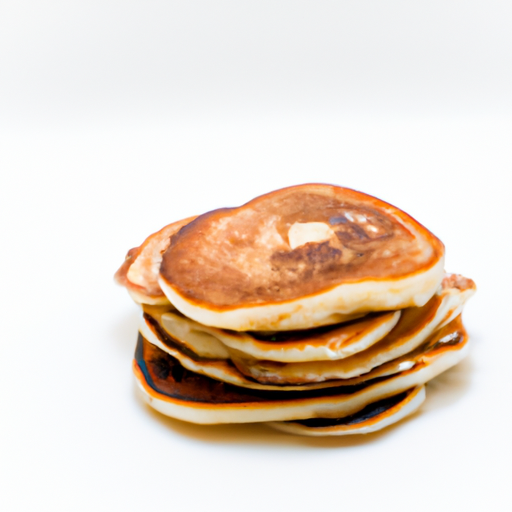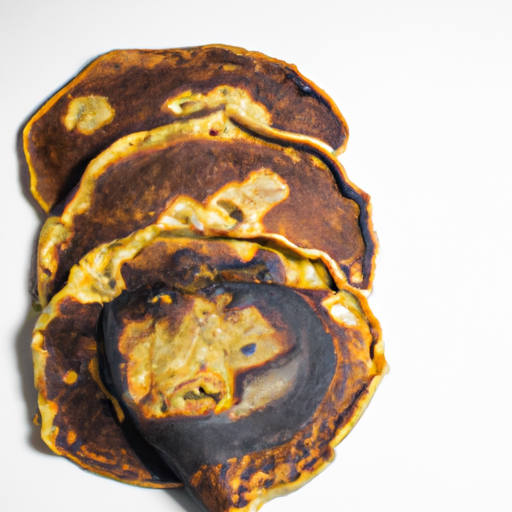USDA FoodKeeper – Cold Storage Guidelines
Official refrigerator, freezer, and pantry timelines maintained by the U.S. Department of Agriculture.
Visit USDA FoodKeeperThere’s nothing quite like the joy of a homemade pancake breakfast, but what do you do with those delicious leftovers? Properly storing them in the fridge can keep your fluffy creations fresh for up to three days, ensuring you can enjoy them again without the worry of spoilage. Just remember, while they’re safe for an extra day, it’s best to savor them sooner rather than later!
"Leftover pancakes cooked at home should be refrigerated within 2 hours of cooking and consumed within 3-4 days for optimal quality and safety, according to USDA guidelines."


Fridge
32-40°F (0-4°C)
Store in an airtight container to maintain freshness.
3 days
90 days
Unpleasant odor, mold growth, slimy texture
Can be reheated in a skillet or microwave for a quick breakfast.
Waffles or French toast
The expiration date for leftover pancakes is typically within 2-3 days if stored in the refrigerator. After this time, the quality deteriorates, and the risk of foodborne illness increases. The best quality of leftover pancakes is within the first 1-2 days, as they may become soggy or dry over time. It's recommended to consume them sooner rather than later for the best taste and texture.
If Pancakes Cooked at Home Leftovers have gone bad, they may have a moldy or slimy appearance, a sour or off smell, and a change in texture such as becoming excessively mushy or dry and hard. Trust your senses - if it looks, smells, or feels off, it's best to discard the leftovers to avoid any potential foodborne illness.
Leftover pancakes can pose a risk for foodborne illnesses if not stored properly. Bacteria like Staphylococcus aureus and Bacillus cereus can grow rapidly on cooked pancakes left at room temperature. To prevent this, it's crucial to refrigerate leftovers promptly.
To store leftover pancakes properly, allow them to cool to room temperature before transferring to an airtight container or resealable bag. Place a sheet of parchment paper between each pancake to prevent sticking. Store in the refrigerator for up to 2-3 days. For longer storage, pancakes can be frozen for up to 1-2 months. To reheat, use a toaster, oven, or skillet for best results, ensuring they are heated through to kill any bacteria.
Pancakes have a long history in various cultures around the world. In the United States, pancakes are often enjoyed as a breakfast or brunch dish, served with maple syrup, butter, and fruits. In France, crepes are a popular variation of pancakes, often filled with sweet or savory ingredients. In Russia, blinis are thin pancakes traditionally served with sour cream and caviar. Different cultures have their unique ways of enjoying this versatile dish.
Pancakes Cooked at Home Leftovers can be consumed if left at room temperature for up to 2 hours. However, beyond this timeframe, harmful bacteria can multiply rapidly, increasing the risk of foodborne illness. It's best to refrigerate them promptly to maintain their quality and safety.
When Pancakes Cooked at Home Leftovers are frozen, the texture may change slightly upon thawing. They could become slightly softer or denser compared to fresh pancakes. To maintain the best texture after freezing, consider reheating them in a skillet or toaster to crisp them up.
The shelf life of Pancakes Cooked at Home Leftovers may vary slightly between different brands due to variations in ingredients and preservatives used. It is recommended to refer to the expiration date on the packaging or follow the guidelines provided by the manufacturer for the best storage practices.
Cooking Pancakes Cooked at Home Leftovers does not significantly affect their expiration date. The shelf life is primarily determined by the ingredients used and how the pancakes are stored after cooking. Proper refrigeration and following storage guidelines are crucial to ensure their safety and quality.
The type of container used to store Pancakes Cooked at Home Leftovers can impact their shelf life. Airtight containers or resealable bags are ideal for maintaining freshness and preventing moisture loss, which can help extend the pancakes' quality. Avoid containers that are not airtight, as they can lead to faster spoilage.
It is generally safe to store Pancakes Cooked at Home Leftovers next to other food items in the fridge as long as they are properly sealed or covered to prevent cross-contamination. Keep them away from raw meats or seafood to avoid any potential transfer of harmful bacteria. Always practice good food storage habits to maintain food safety.
Pancakes Cooked at Home Leftovers typically have a similar shelf life in both summer and winter if stored properly in the refrigerator. However, in warmer temperatures, there may be a slightly higher risk of bacterial growth, so it's crucial to adhere to storage guidelines and consume the leftovers within the recommended time frame to ensure safety.
When transporting Pancakes Cooked at Home Leftovers for a 4-hour road trip, pack them in a cooler with ice packs to keep them chilled and maintain food safety. Ensure the cooler is well-insulated and keep it in the car's air-conditioned area rather than in the trunk where temperatures can rise significantly. Consume the pancakes within a few hours to prevent spoilage.
Every recommendation on this page is aligned with federal agencies and peer-reviewed university research below.
Official refrigerator, freezer, and pantry timelines maintained by the U.S. Department of Agriculture.
Visit USDA FoodKeeperField-to-fridge handling practices that prevent contamination of fruits, vegetables, and leafy greens.
Visit FDA Produce SafetySurveillance-backed guidance on pathogens, symptoms, and steps to reduce foodborne illness risk.
Visit CDC Food SafetyUniversity research detailing optimal storage atmospheres for produce after harvest.
Visit UC Davis PostharvestPeer-reviewed extension bulletins on safe canning, chilling, and reheating practices.
Visit Penn State ExtensionNeed deeper reading? Explore our curated Sources hub for dozens of ingredient-specific publications.
Scan your food directly and get instant safety info using our AI-powered camera feature.
Grains & Pasta
View expiration date and storage guide →
Herbs and Fresh Produce
View expiration date and storage guide →
Meat & Poultry
View expiration date and storage guide →
Herbs and Fresh Produce
View expiration date and storage guide →
Dairy Products
View expiration date and storage guide →
Fruits & Vegetables
View expiration date and storage guide →
Dairy Products
View expiration date and storage guide →
Seafood
View expiration date and storage guide →
Meat & Poultry
View expiration date and storage guide →
Important: These are general guidelines based on authoritative sources listed above. Always use your best judgment and when in doubt, throw it out. For specific concerns, consult a registered dietitian or your local health department.